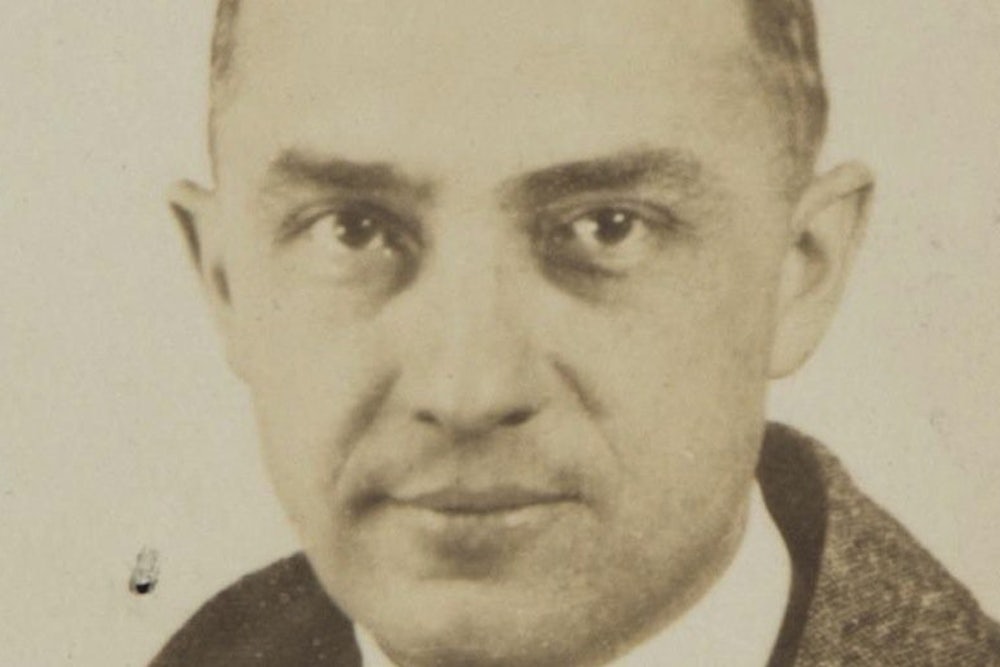On this day 130 years ago, poet (and practicing physician) William Carlos Williams was born. But his work wasn't limited to poetry itself; over the years, Williams contributed various critical essays to this magazine on a wide range of topics, including this one about Wallace Stevens.
The story is that Stevens has turned of late definitely to the left. I should say not, from anything in this book. He’s merely older and as an artist infinitely more accomplished. Passion he has, too often muted, but not flagrantly for the underdog. No use looking for Stevens there—without qualifications.
“The Man with the Blue Guitar,” the first poem, is one of the best. It is everything that we know as Stevens. There are thirty-three divisions of it, a longish poem arranged in couplets, four beats to the line—thirty-three virtual lyrics, a format which Stevens has always found congenial, for, though he seems at times not to wish to acknowledge it, he is primarily a lyric poet. But unlike some of his earlier variations on a theme, this progresses to a fairly definite conclusion. The Blue Guitar, or its master rather, argues with an objector who complains that he (the poet) does not speak of things as they are. The reply comes:
Nothing must stand
Between you and the shapes you take
When the crust of shape has been destroyed.
You as you are? You are yourself.
The blue guitar surprises you.
Stevens is a troubled man who sings well, somewhat covertly, somewhat overfussily at times, a little stiffly but well. If he were satisfied with that! He seems at his best singing in the four-beat time and the lyric form of this excellent poem. But this isn’t enough for Stevens.
And so, to clinch the argument—for this book is in a way one long argument to emphasize a point—Stevens goes on and unfortunately overemphasizes what he has to say, relative to the function of a poet, making a defense of the poet, an apology for the poet, for Stevens himself, facing his world. Because of this and the wordiness of its effect I don’t like the second poem, a long subdivided one also under the general head, “Owl’s Clover.” It has its old woman very effectively balanced against the heroic plunging of sculptured horses, but nothing moves as it should.
Five beats to the line here, and that’s where the trouble is let in. These five beats have a strange effect on a modern poet; they make him think he wants to think. Stevens is no exception. The result is turgidity, dullness and a language, God knows what it is! certainly nothing anybody alive today could ever recognize—lit by flashes, of course, in this case; for whatever else he may be Stevens is always a distinguished artist. The language is constrained by the meter instead of there being—an impossible peak it may be—a meter discovering itself in the language. We are still searching. Much more might be said were there space for it.
The whole book shows the too rigid selection which Stevens feels is his virtue. He does not want to overload a book with merely excellent but repetitious lyrics.
Fortunately there are five shorter pieces standing more or less alone at the book’s close, the last of which, “The Men That Are Falling,” is the most passionate and altogether the best work in this selection—one of the best poems of the day. Here Stevens has shown himself the man, the artist in all the profundity of his aroused sensibilities, no longer fiddling with thoughts but embodying thought in an adult thrust with all his mature weight behind it. The five beats to the line are not an embarrassment here, while the invention of dealing with the head only in depicting a death, such a death as that of this poem, is something of which our literature may be proud—the real of that to which we sometimes facetiously refer as creative writing. It’s a lesson for us all.
